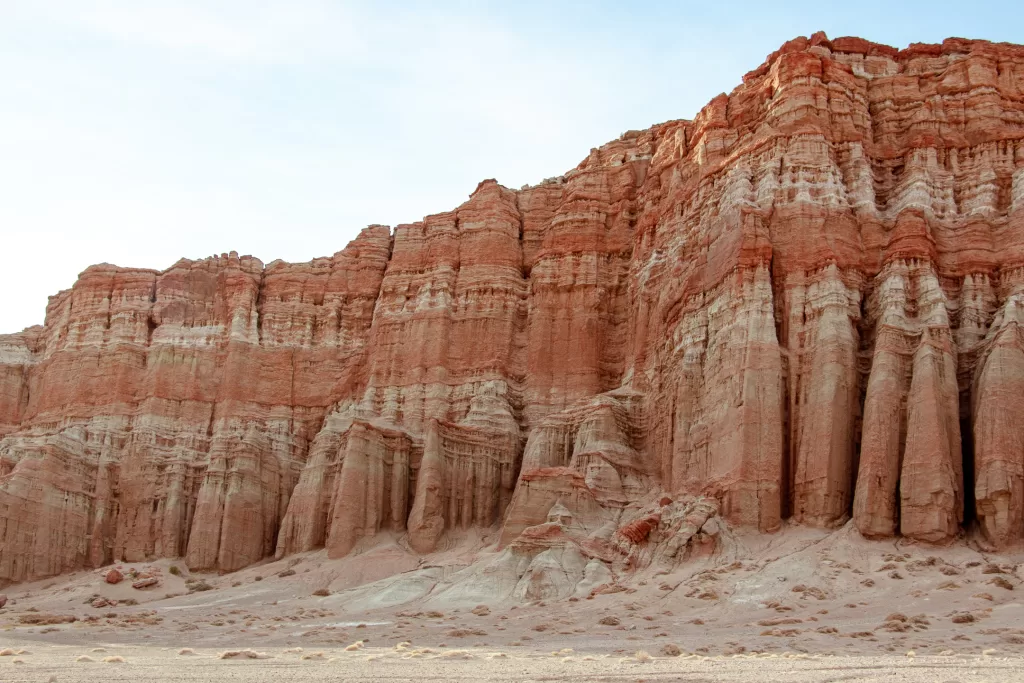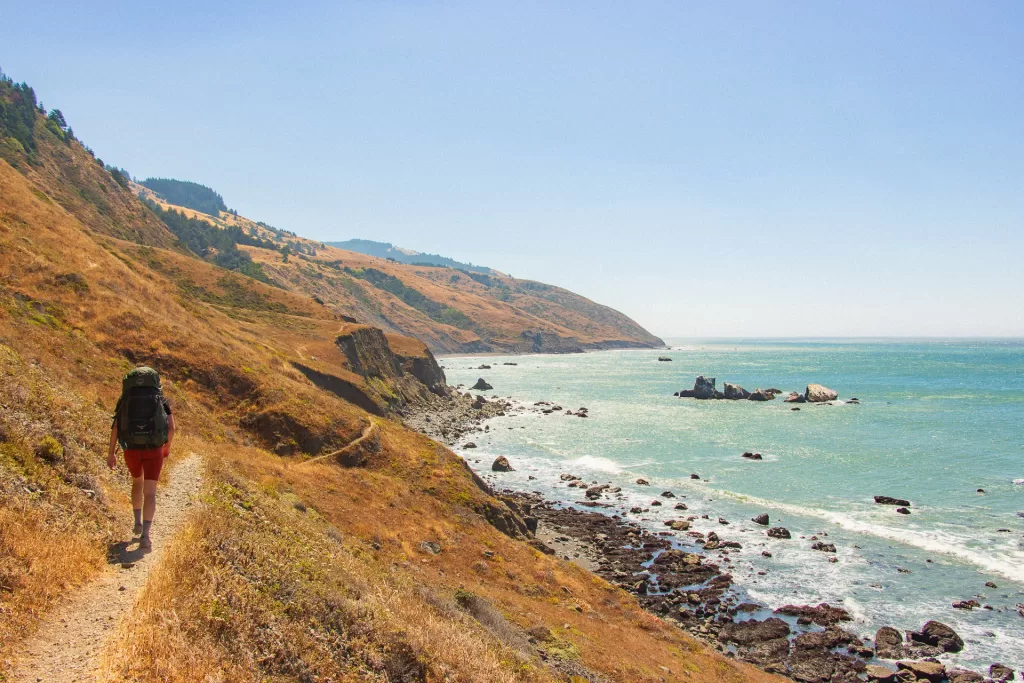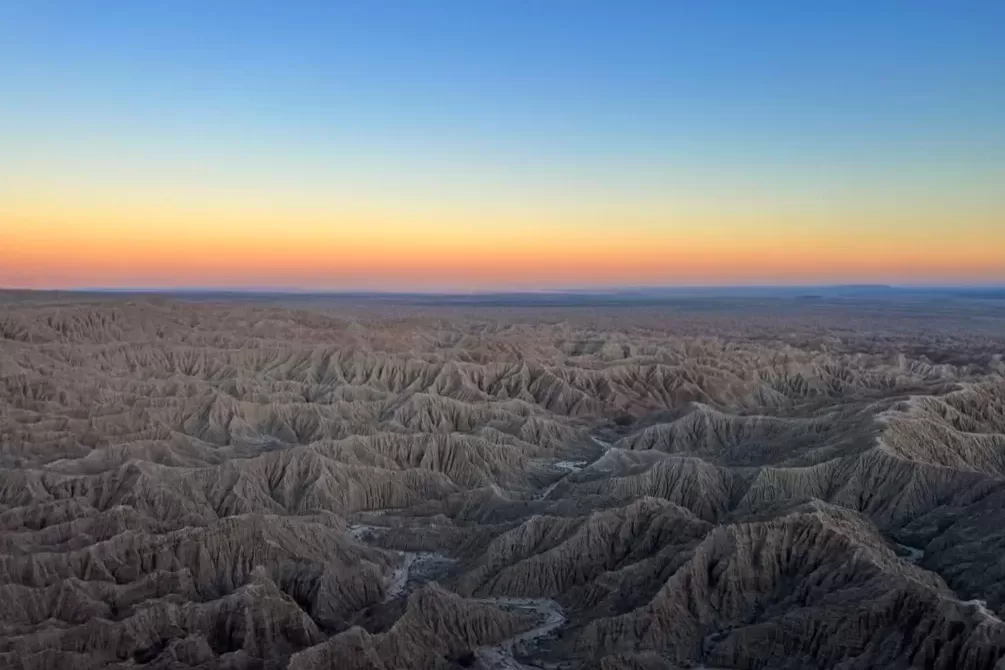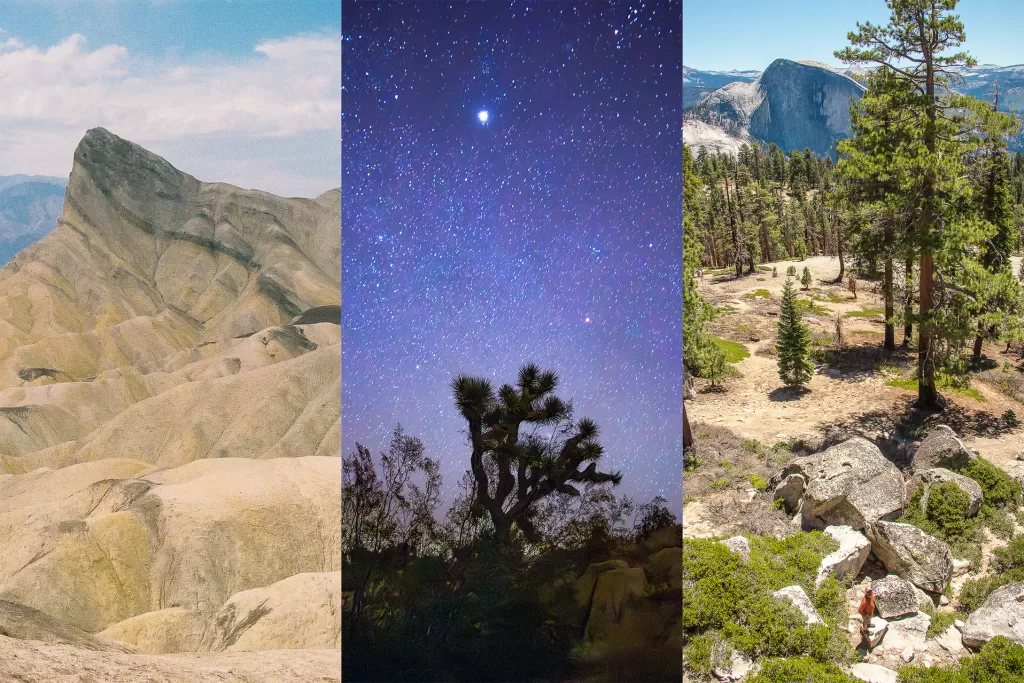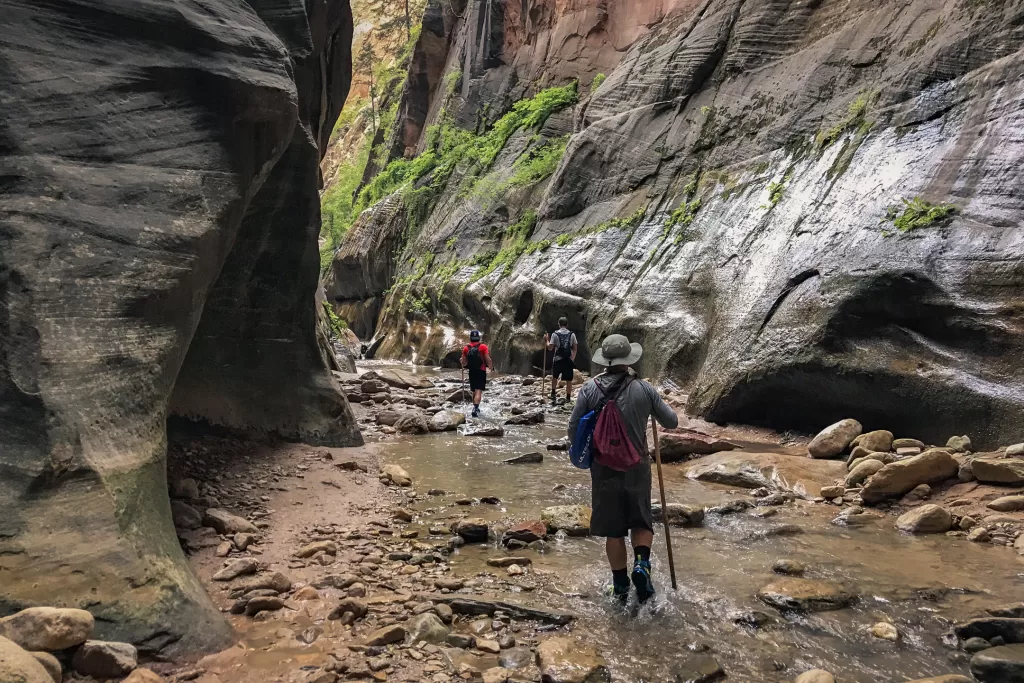I thoroughly believe that Red Rock Canyon State Park is one of the most underrated parks in California. Because it’s located on a major state route, many people often drive right on by without giving it a second thought. I did the same for years, passing it many times on my way up to the Eastern Sierra and Death Valley. However, its mystique and allure captivated me, and I finally set off to properly experience the park—I was completely blown away by how beautiful and mesmerizing the landscape was. The striated red cliffs that tower high above the desert expanse were nothing like I had ever seen. Continue reading to learn everything you need to know about visiting Red Rock Canyon State Park, including how I spent my time exploring and camping in this hidden gem of the California desert!
Note: this park is completely different from Red Rock Canyon National Conservation Area, which is just outside of Las Vegas. Pay attention when researching online, that you’re looking up the correct place!
Red Rock Canyon State Park Location, Directions, and Hours
Red Rock Canyon State Park is in Kern County, about 2 hours north of Los Angeles and 1.25 hours east of Bakersfield, making it a great destination to visit as a long day trip or an overnight adventure. Also, it’s right off Highway 14, making it an easily accessible stop on your way up to Highway 395 and the Eastern Sierra. The closest town is Mojave, which is about 20 minutes south and has grocery stores, gas stations, and everything else you may need for your time in the park.
Day use hours are sunrise to sunset, and it costs $6 per vehicle per day. Those who choose to camp can do so for $25 per night.
The Geology of Red Rock Canyon State Park
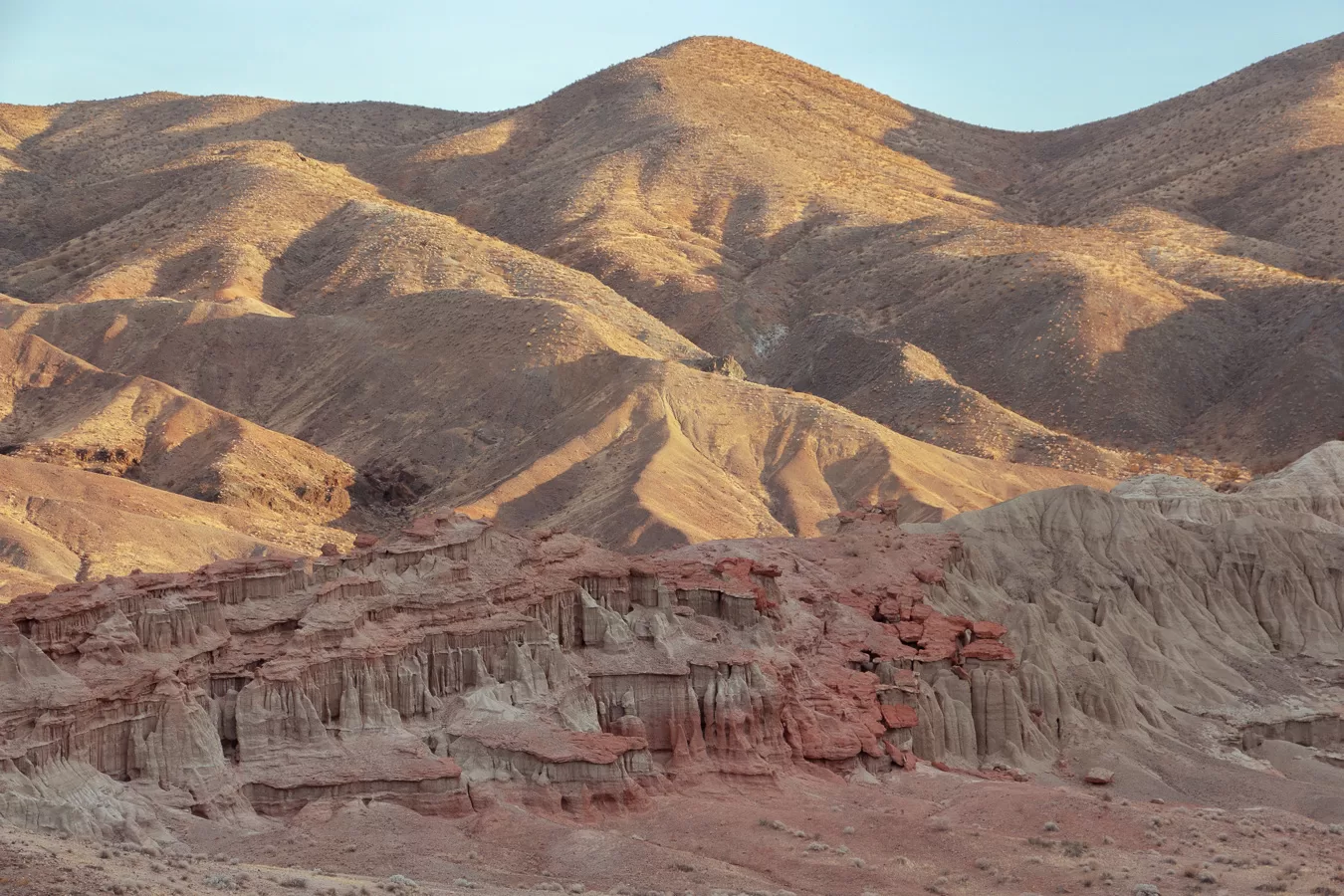
Red Rock Canyon State Park sits at the intersection of two California mountain ranges—the El Paso and the Sierra Nevada—and formed as a result of sedimentary and volcanic activity, paired with tectonic and erosion processes. Sediment deposits from ancient waterways and volcanic activity initially shaped the terrain. Then, tectonic activity along the El Paso fault caused the land to uplift at a 15-20 degree angle, exposing the cliffs to the elements. Finally, after millions of years of exposure to the wind and rain, the sedimentary rock eroded, revealing the more durable and striated volcanic layer. The rust-red tint we see today is the result of the iron oxidation of minerals in the cliffside.
History and Cultural Significance
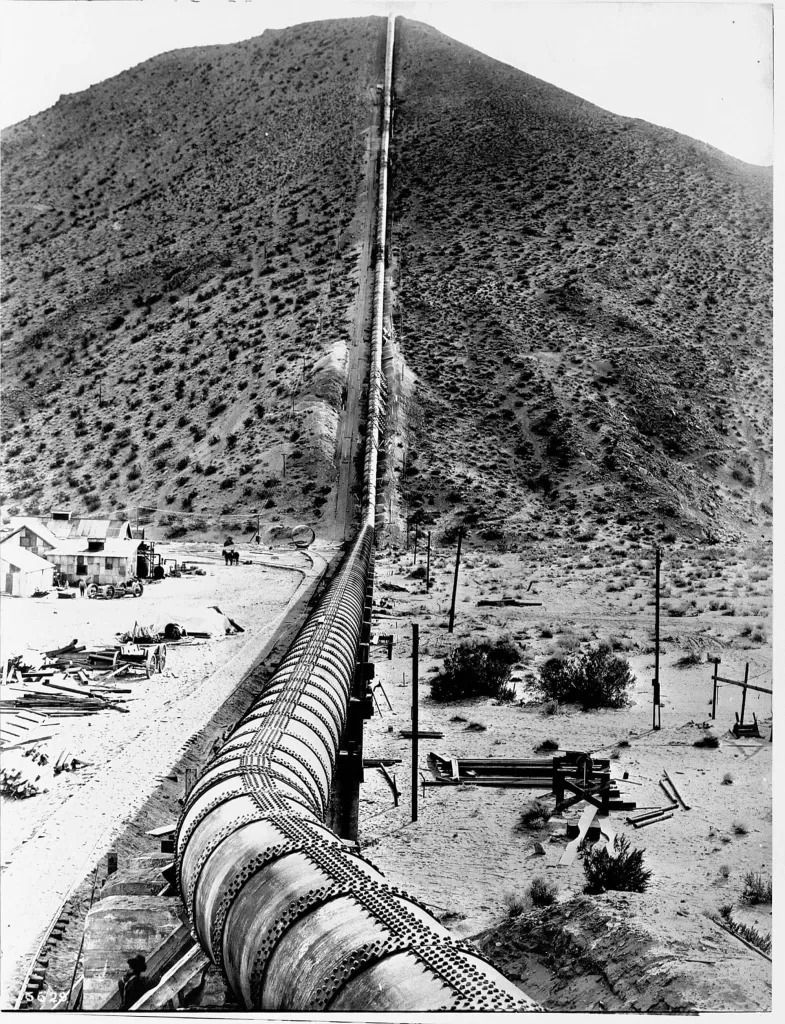
The Kawaiisu people were the original inhabitants of Red Rock Canyon State Park, with evidence of their presence as early as 8700 BC. In the 1800s, miners began to flock to this area and build small communities. At the turn of the 20th century, William Mulholland passed through the canyon on his quest to find additional water supplies for the rapidly growing city of Los Angeles. Over the next two decades, the Los Angeles Aqueduct was built, starting in the Owens Valley and traveling through what would become Red Rock Canyon State Park to the city of LA.
Starting in the 1920s, Hollywood has used the landscape as a backdrop for over 140 movie and television productions, including Jurassic Park and the original Westworld. Public interest in preserving this area began to grow during this time as well. Finally, in 1968, Red Rock Canyon State Park joined the California State Park system, and in 1970, it was open to the public.
Hiking Trails and Points of Interest
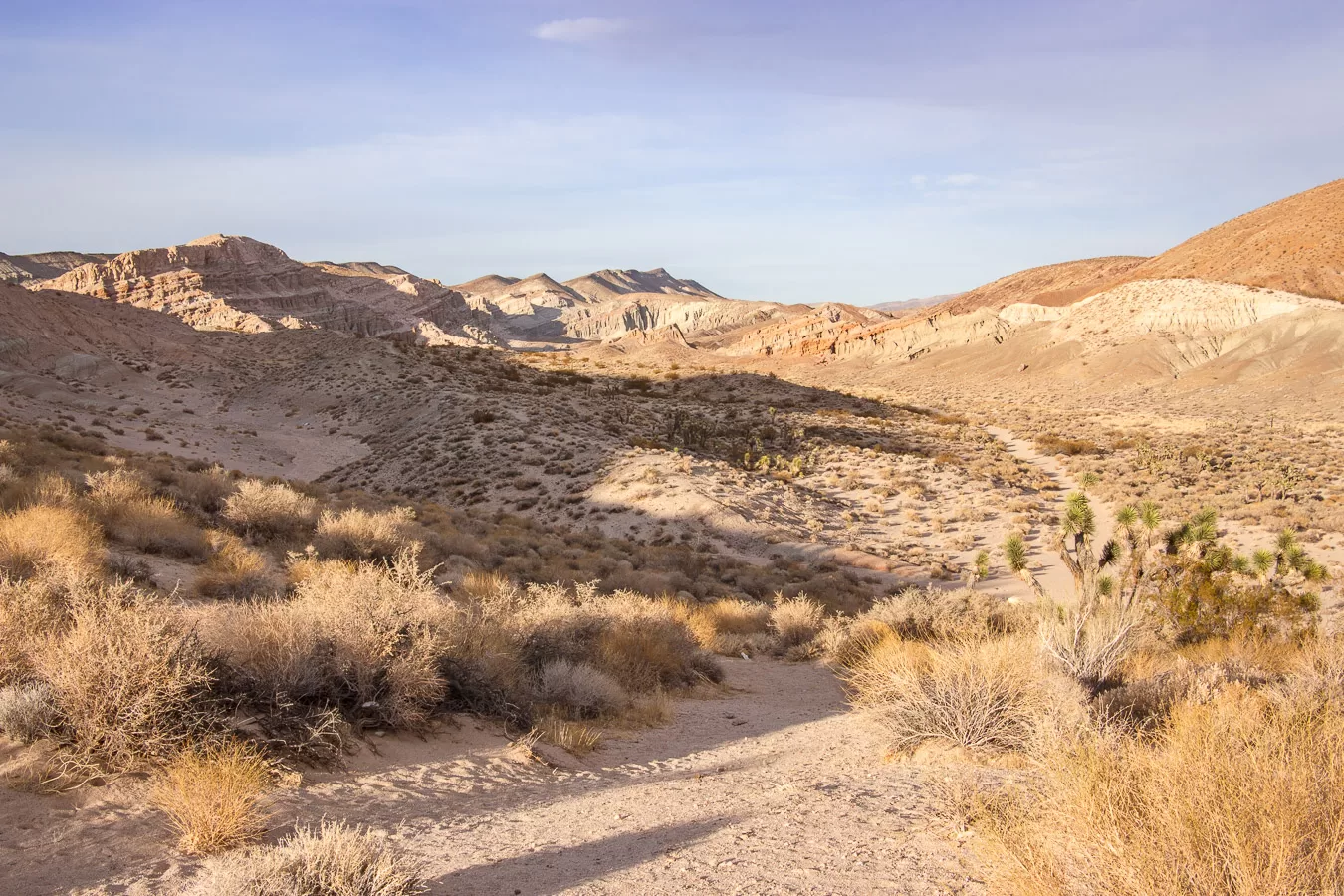
Many trails take you by the mystical red cliffs and through the desert expanse. Some of the most popular include the Hagen Canyon Nature Trail, the Ricardo Camp South Loop Trail, and the Red Cliffs Nature Trail (which I hiked—you can scroll down to read about my experience). Most trails are short, only about one to two miles at most. Still, make sure to bring plenty of water, sun protection, and extra layers just in case the elements change when you’re out there.
Several points of interest are easily accessible by vehicle. Turk’s Turban and Red Cliffs are both amazing displays of geology that you can see without leaving your car. You’ll also find Joshua Trees scattered throughout the park. And, because it’s so far from civilization, it’s a great place to go stargazing, especially during a new moon.
It costs $6 per vehicle per day to visit.
Camping at Red Rock Canyon State Park
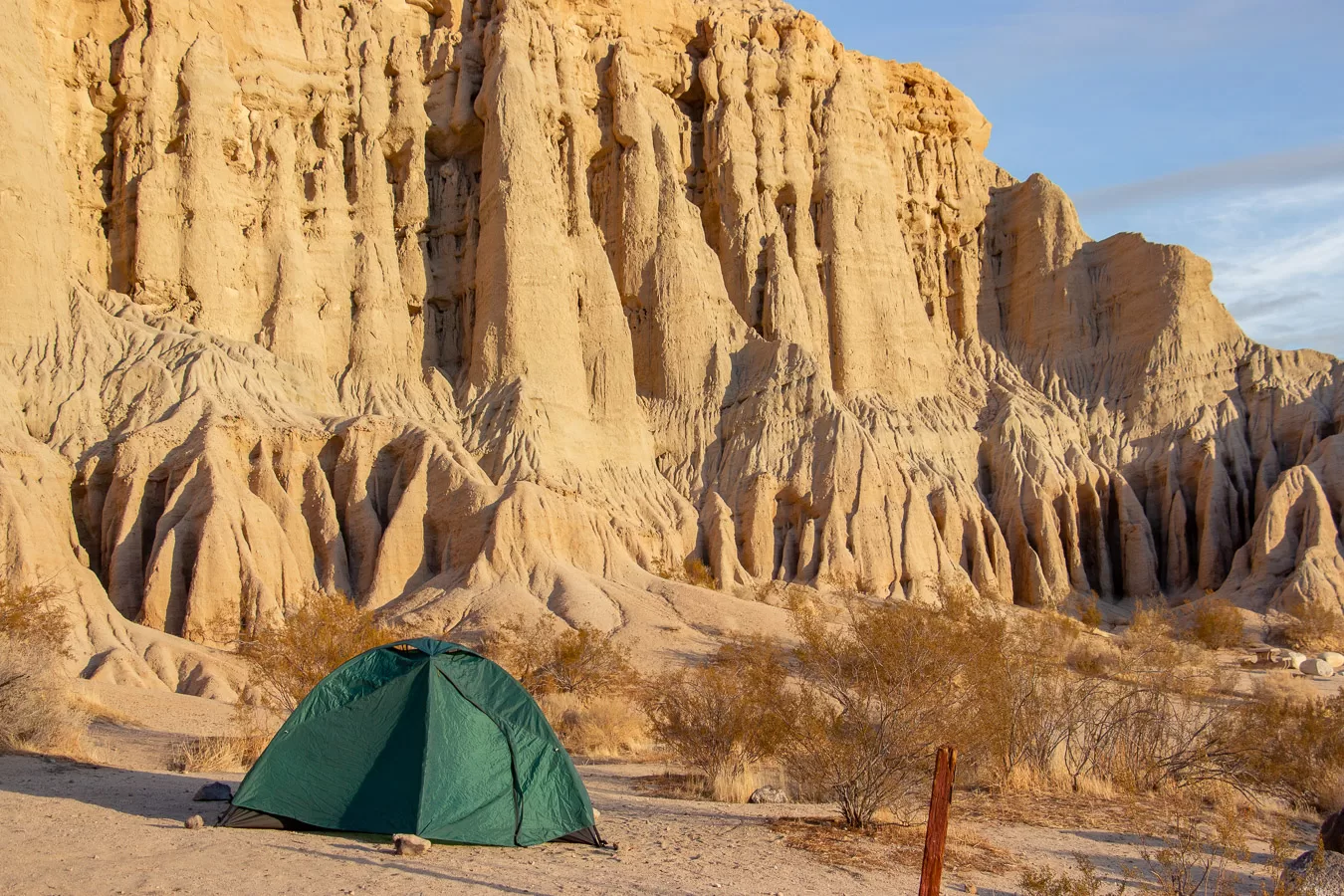
Guests are allowed to camp at the Ricardo Campground. There are 50 first-come, first-served sites and visitors will find standard camping amenities such as a picnic table, fire ring, and flush toilets. There is also potable water, but call ahead and double-check as sometimes it’s shut off. You also can purchase firewood at the visitor center if it is open. Sites cost $25 per night. Note that this campground can get busy on weekends and holidays in the spring and fall. Make sure to arrive early so that you can get a spot.
The best part about the Ricardo Campground is that you can camp by the alien-like cliffs this park is known for. Personally, I think that sites 11-16, 18-21, 26-42, and 48 are the best since they are located right next to these rock formations. I was able to snag site 20 when I went and loved it. You can check out the Ricardo Campground map for more information.
Best Times to Visit
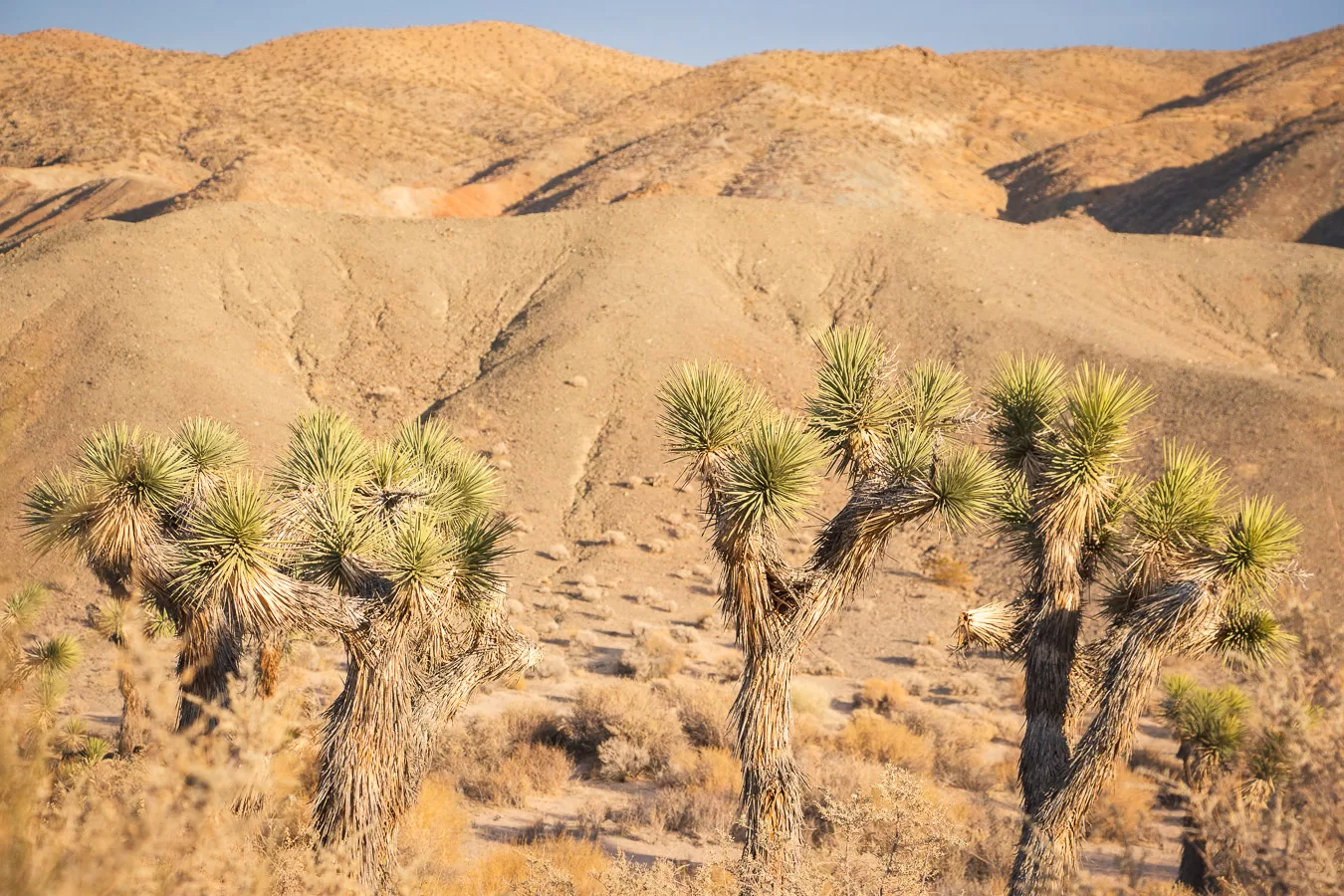
Spring and fall are the best seasons to visit Red Rock Canyon State Park, as the weather is mild. In terms of time of day, sunrise and sunset are hard to beat, as everything is cast in warm alpenglow light.
Wildflowers
After a wet winter, Red Rock Canyon State Park is an excellent (and likely uncrowded) place to experience some beautiful California wildflowers! From the yellow California Coreopsis to the purple Mojave Aster and the orange Desert Mariposa Lily, the landscape is bathed in a sea of color. Depending on the year and how much rain the desert receives, they will likely be blooming between mid-March through early May. Popular places to witness this stunning display are the Ricardo Nature Trail, Hagen Canyon, and Red Cliffs Preserve. Note: please stay on trails and avoid trampling or picking the flowers. They are delicate plants and disturbing them could cause them not to grow back the following year.
The Red Rock Canyon Interpretive Association has an entire webpage dedicated to wildflowers in the park!
If you’re looking for another underrated and otherworldly desert destination, then check out the Trona Pinnacles nearby. The tufa spires seem to inexplicably rise from the ground up to heights of 140 feet! You can read about my experience camping here below!
My Experience Hiking and Camping in Red Rock Canyon State Park
Finally carving out some time to visit Red Rock Canyon State Park, I left Los Angeles around mid-day and made the easy two-hour drive north along California State Route 14! My first stop was to claim a campsite before heading out to explore.
Setting Up Camp at the Ricardo Campground
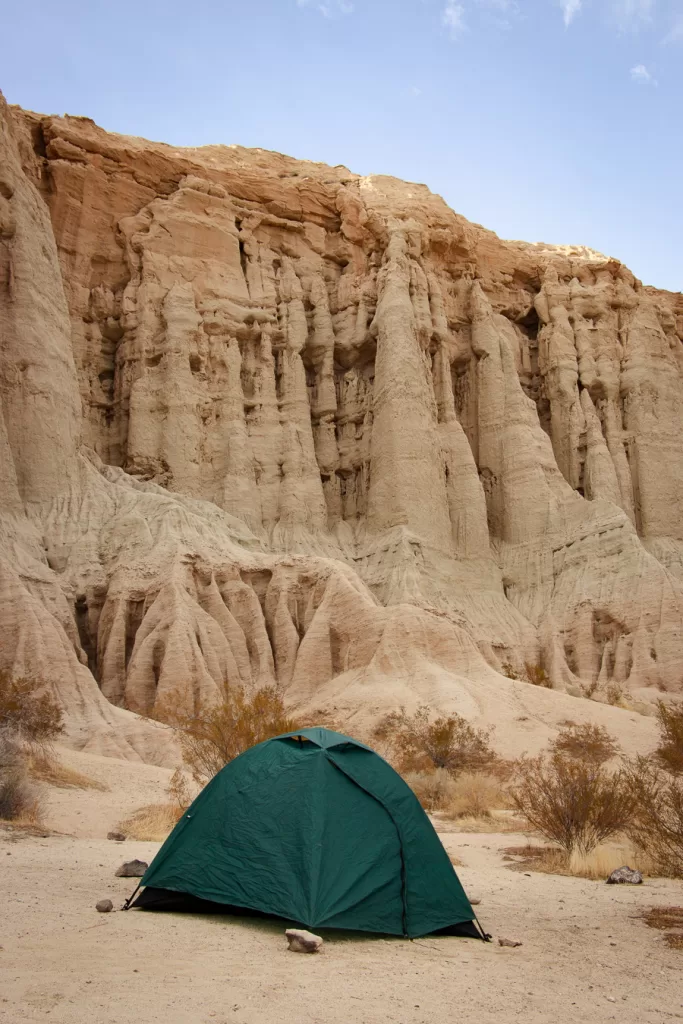
I reached the Ricardo Campground and luckily had a plethora of options to choose from. After completing a loop in my car to check out all the sites, I picked number 20, which was one of many that sat directly in front of the White House Cliffs. This otherworldly backdrop was mesmerizing and I was glad to have the chance to camp underneath it. I unloaded my supplies, paid for my site, and set up my tent. However, I didn’t stick around too long as I wanted to get some hiking in before the sun went down.
Hiking the Red Cliffs Nature Trail
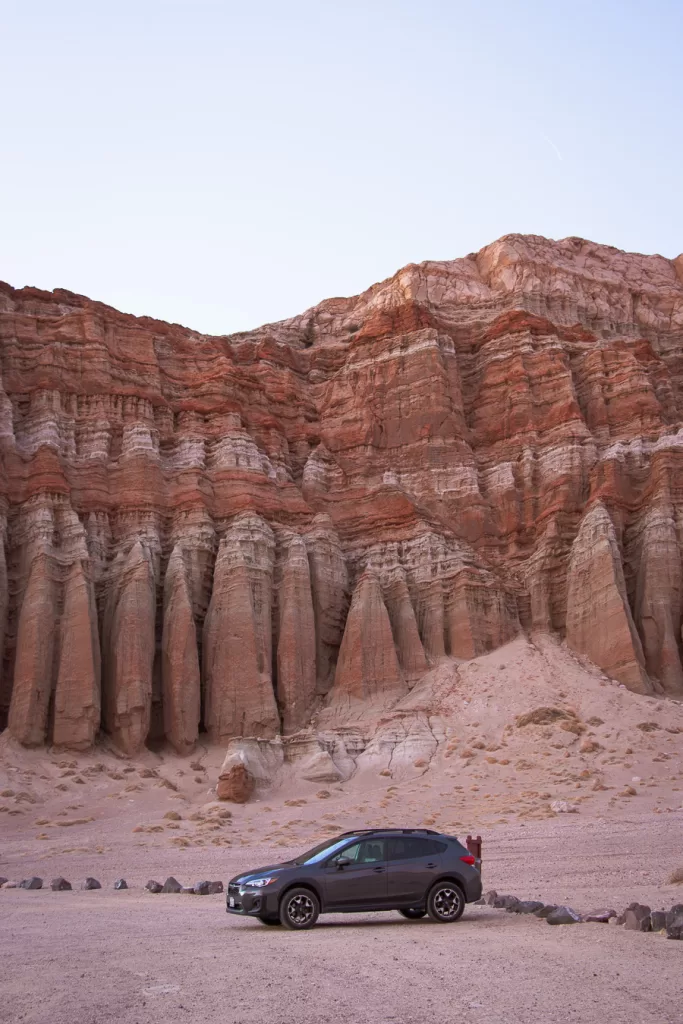
I hopped in my car and made the short two-mile drive from the Ricardo Campground to the Red Cliffs Nature Trail. Arriving at the trailhead, I was blown away by what I saw. Next to the parking area were dramatic and towering rust-colored pillars rising several stories straight out of the ground. I’d seen pictures online of these jaw-dropping rock formations, but couldn’t believe just how striking they would be in person. I admired them for a bit before putting on my hiking clothes and heading out on my hike.
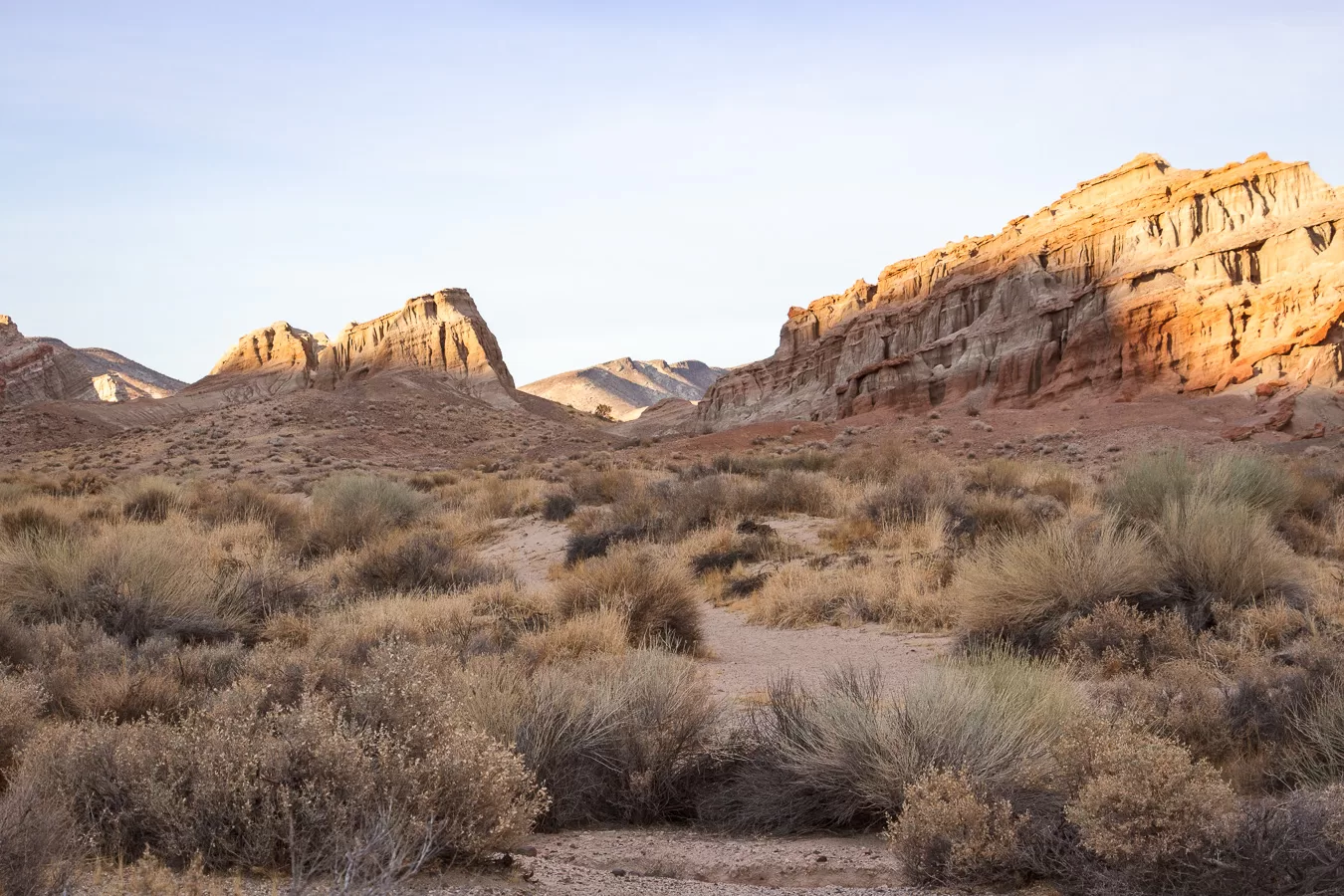
Though you can stay around the Red Cliffs for a short, 1-mile loop, I opted to extend my hike further into the canyon for a 2.25-mile adventure. As I traversed this landscape, I took in the expansive and rolling desert vistas. Creosote bushes and Joshua Trees lined the trail—In the distance, I spotted more rock formations protruding from the earth at impossible angles. Tones of green, yellow, red, brown, beige, and everything in between swept across the desert terrain.
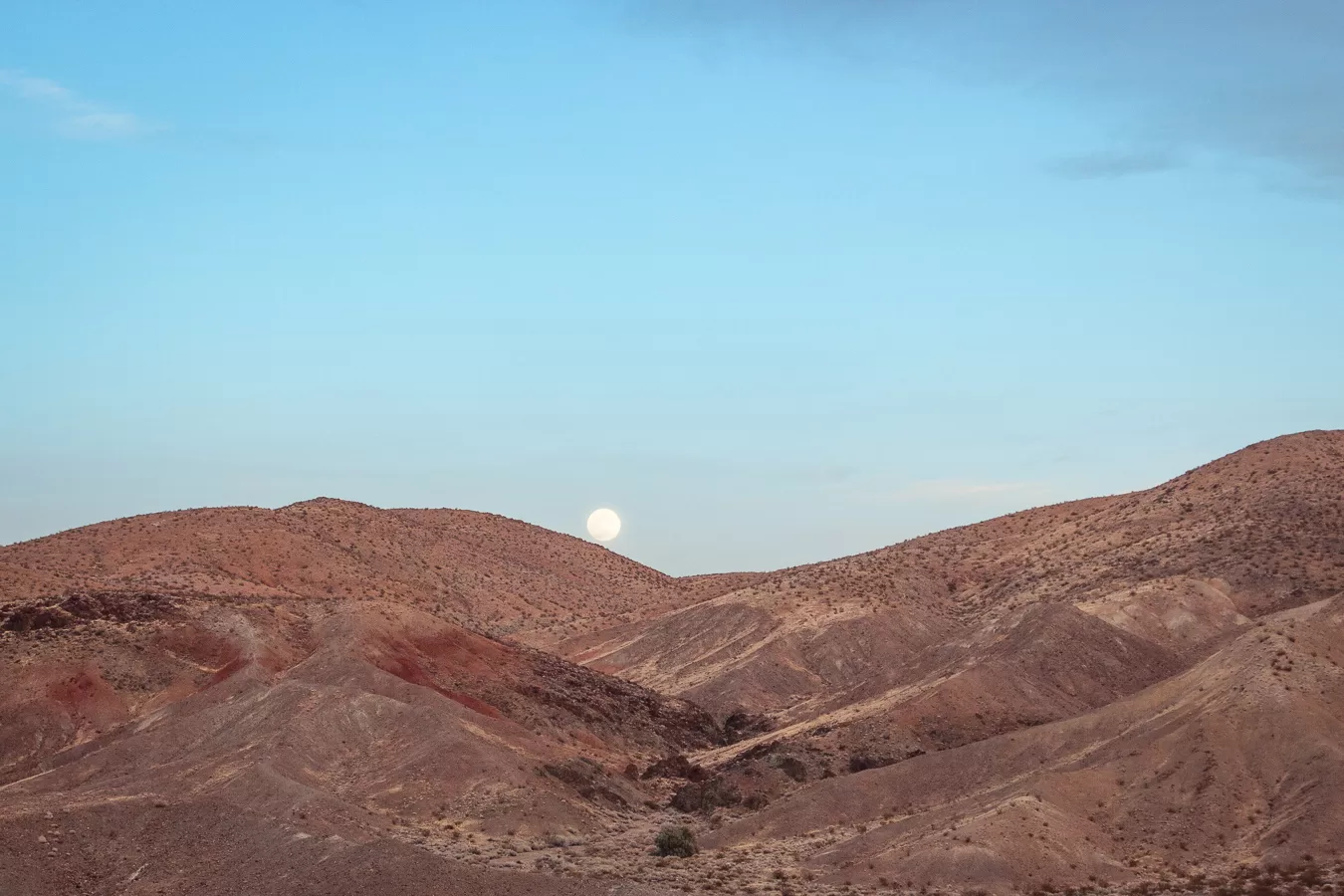
A full moonrise over mountains in the distance was a surprise and added an even more spiritual presence to an already mystical place. If not for the impending darkness and the wind’s piercing cold, I could have stayed out and explored for hours. I arrived at my car just as the sun set full of wonder and appreciation for this unique place.
Capturing the Night Sky
It was almost dark by the time I got back to my campsite. After quickly starting a fire and eating a surprisingly nourishing meal (ramen with added veggies and a hard-boiled egg), I spent the next hour or two capturing the night sky.

The White House Cliffs were the perfect otherworldly complement to the cosmic above, and I loved exploring all the different angles with my camera. Eventually, it got too cold and windy for me to continue and I retreated to my tent, ready for a good night’s sleep.
Waking Up for Sunrise
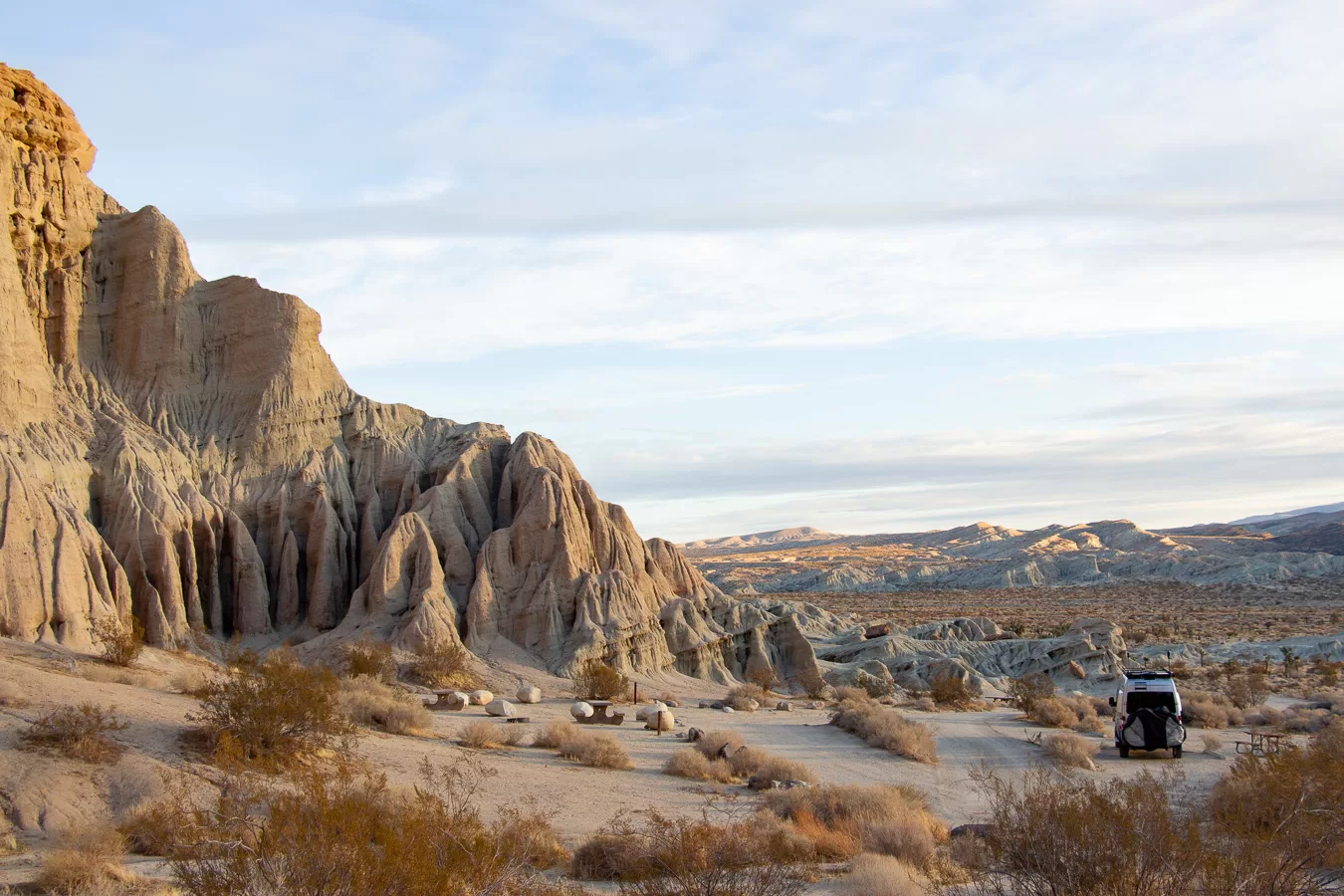
There were wind gusts up to 30 mph, which made it a little difficult to fall asleep. However, they eventually died down and I was out until my alarm went off at 6:30 AM. I’m not normally a morning person, but I didn’t want to miss the opportunity to catch the sunrise. Unfortunately, some clouds in the distance blocked the horizon, but I still enjoyed witnessing the desert come alive. The golden hour light painted the White House Cliffs in a gorgeous warm hue and I could hear two hawks flying back and forth above, sharing morning pleasantries. I took a few photos and boiled water for some tea and oatmeal. Finally, at around 8:30 AM, I packed my things and soaked in the beautiful campsite one last time before heading home.
Make sure to check out Red Rock Canyon State Park the next time you’re in Southern California! If you’re looking to explore the wild, please reach out! We at GoForth are experts at helping you plan your outdoor adventure, and we’d love to help curate an unforgettable trip. Click on the button below to learn more about our offerings, and contact us if you’re ready to take the first step toward a life outdoors!

